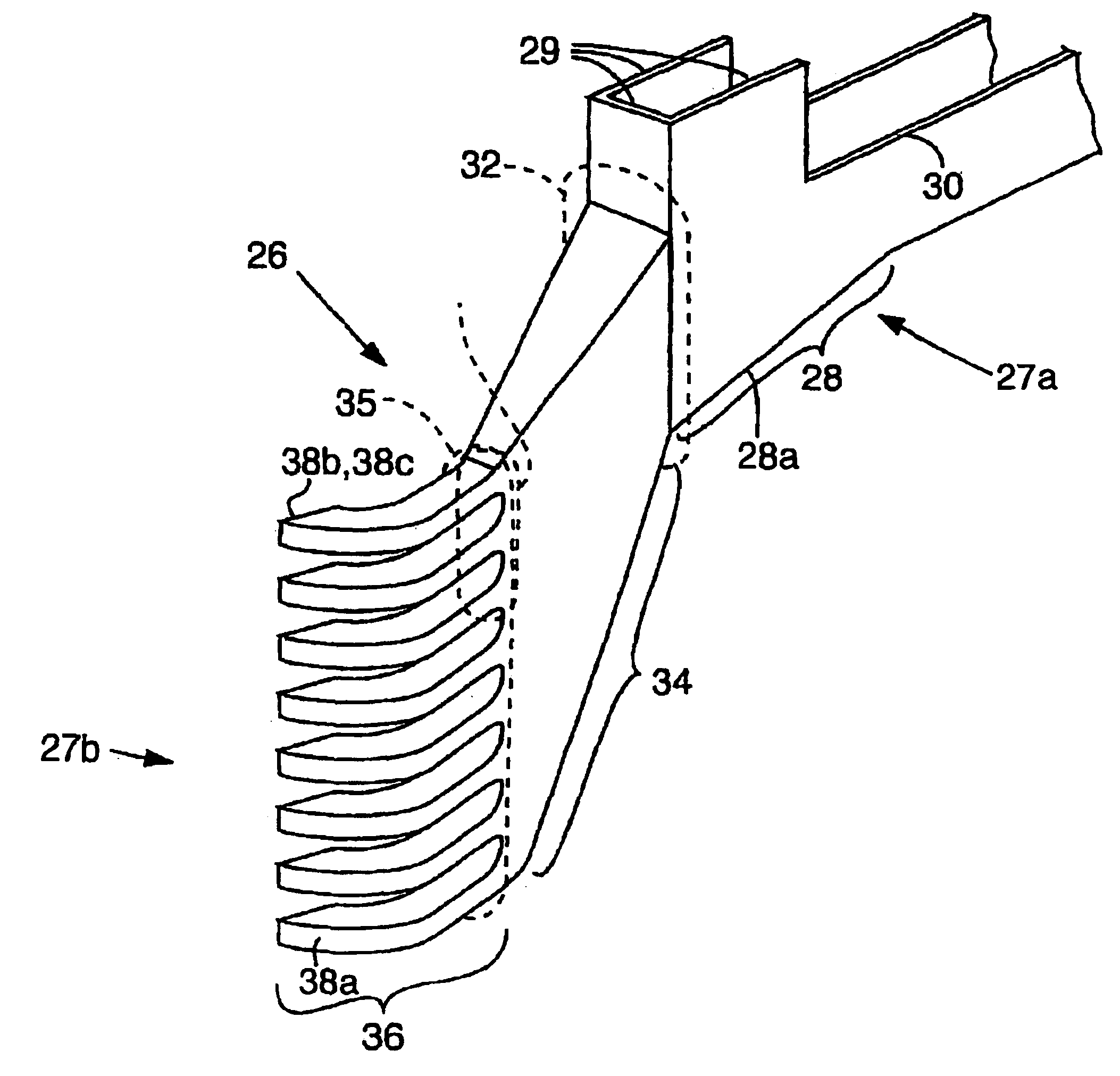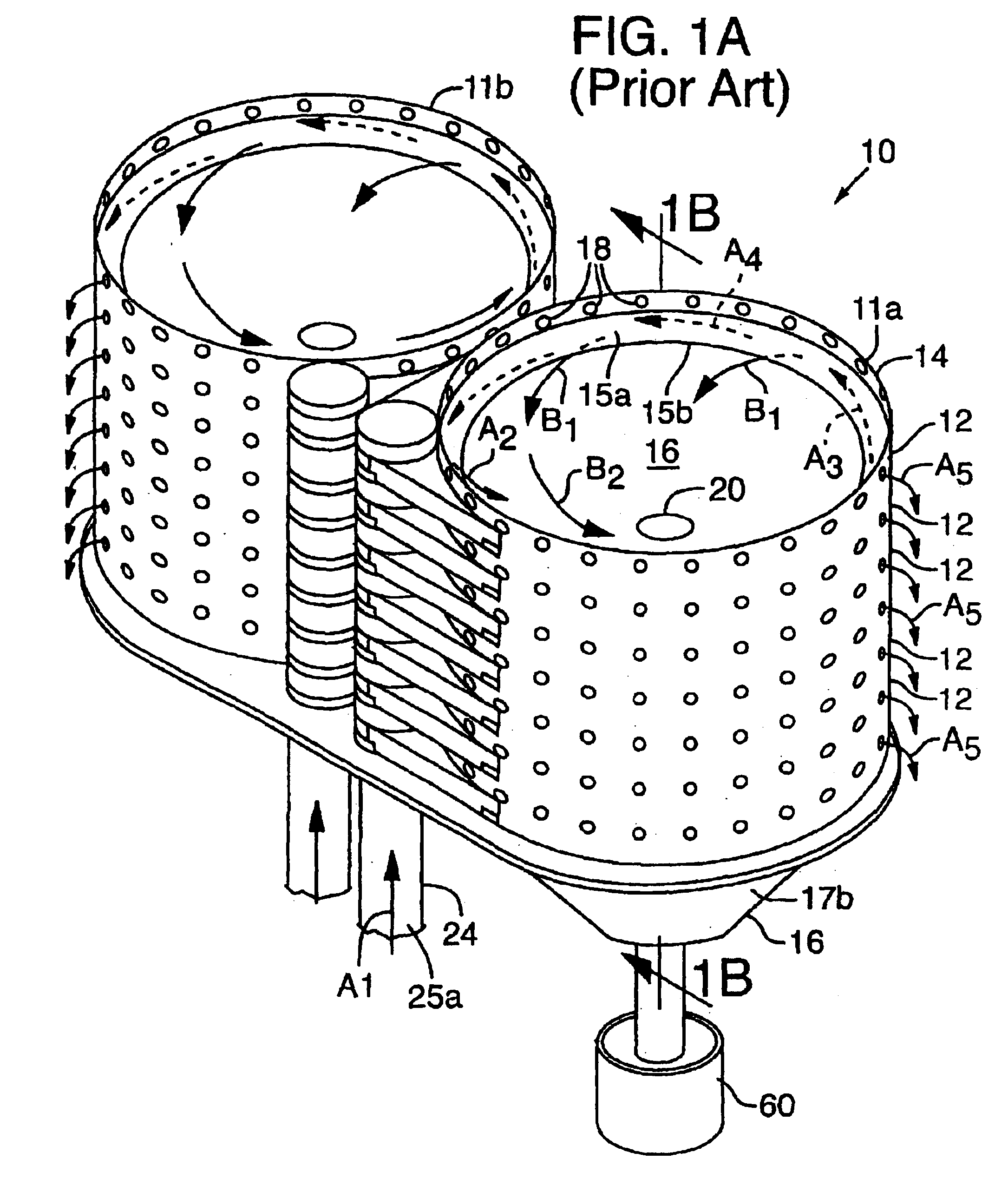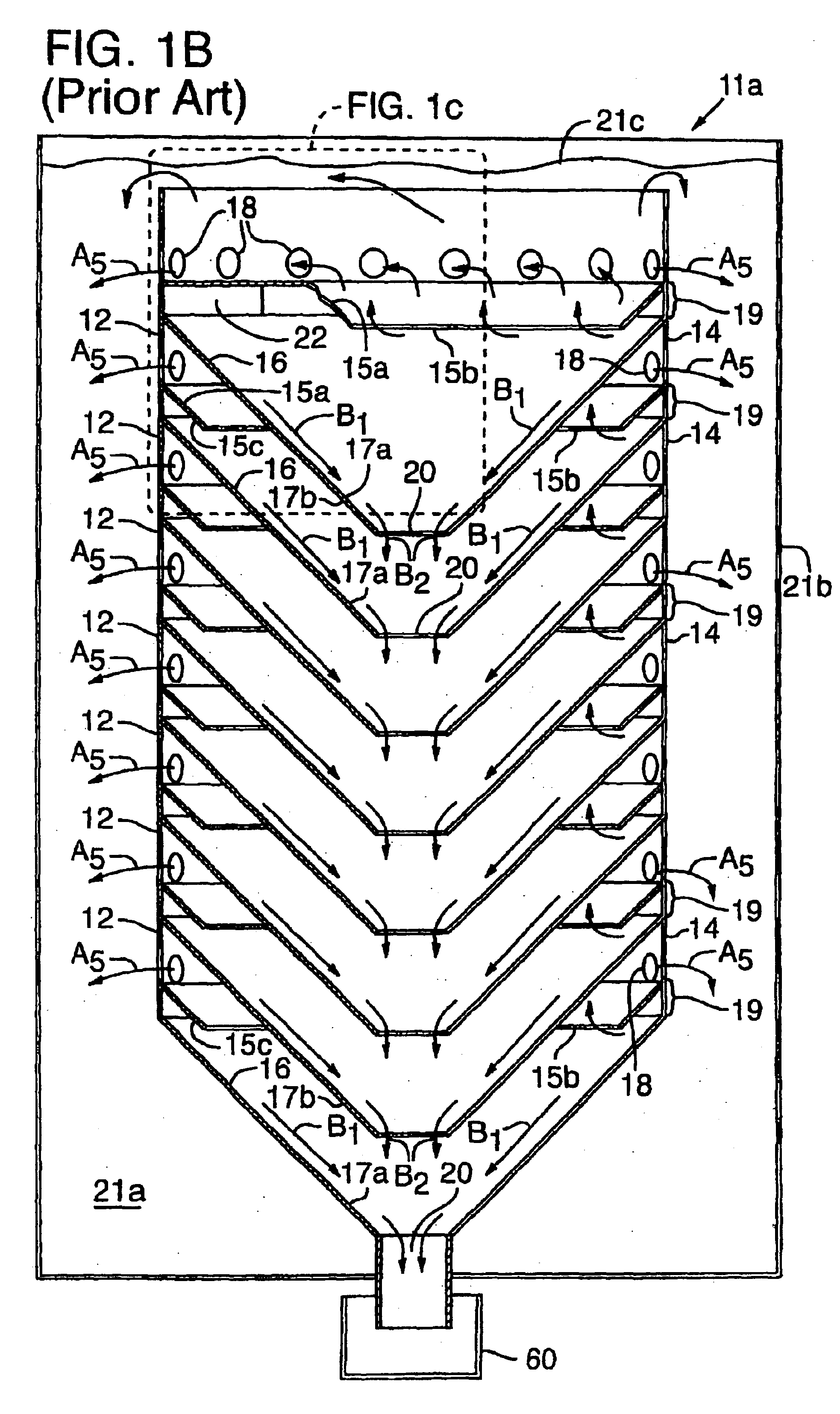Energy-efficient duct, head cell with duct and methods
a head cell and energy-efficient technology, applied in the direction of centrifuges, liquid displacement, separation processes, etc., can solve problems such as wear and tear, and achieve the effects of improving efficiency, reducing the operating energy requirement of the head cell, and improving performance and efficiency
- Summary
- Abstract
- Description
- Claims
- Application Information
AI Technical Summary
Benefits of technology
Problems solved by technology
Method used
Image
Examples
Embodiment Construction
As described below, new methods and apparatus provide for operating a treatment apparatus with improved performance and efficiency. In specific implementations, the wastewater treatment apparatus is a head cell that removes grit from influent at an initial stage before the resulting effluent from the head cell is subjected to subsequent treatment. Efficient grit removal requires achieving particular flow conditions in the head cell, which also implicates the design of the duct leading to the head cell.
Grit and Grit Removal
Removing grit from influent before subsequent treatment can help alleviate two problems: (1) wear (especially of rotating parts), and (2) deposition and accumulation of grit that leads to loss of performance. As used herein, “grit” refers to inorganic, settleable solids that are denser than water (i.e., having a specific gravity greater than 1.0). Grit includes both particles that travel along the bottoms of pipes, channels, ducts, etc., and particles that are susp...
PUM
| Property | Measurement | Unit |
|---|---|---|
| Velocity | aaaaa | aaaaa |
| Level | aaaaa | aaaaa |
| Velocity | aaaaa | aaaaa |
Abstract
Description
Claims
Application Information
 Login to View More
Login to View More - R&D
- Intellectual Property
- Life Sciences
- Materials
- Tech Scout
- Unparalleled Data Quality
- Higher Quality Content
- 60% Fewer Hallucinations
Browse by: Latest US Patents, China's latest patents, Technical Efficacy Thesaurus, Application Domain, Technology Topic, Popular Technical Reports.
© 2025 PatSnap. All rights reserved.Legal|Privacy policy|Modern Slavery Act Transparency Statement|Sitemap|About US| Contact US: help@patsnap.com



